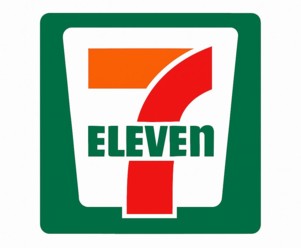Employee Bonuses: Pros, Cons, and Best Practices
By Davis Clarkson , May 12 2025

Employee bonuses are extra payments added to the gross pay of an employee. These payments usually serve as a form of reward for an action or achievement in the workplace.
In most organizations, bonuses for employees are added based on loyalty and performance. When utilized in the right way, it can yield increased engagement and employee morale.
In this helpful guide, we will delve into the importance of a good bonus structure for employers. You will learn the benefits and risks of offering employee bonuses.
What Are Employee Bonuses?
Employee bonuses are extra cash or rewards that an employer gives on top of the regular paycheck. They’re like a “thank you” for doing a great job—meeting goals, sticking around, or hitting special milestones. Instead of being part of your base salary, these bonuses are one-time or occasional payouts meant to reward and motivate you.
Employee bonuses can either be discretionary or nondiscretionary. Discretionary bonuses are awarded at management’s discretion. Nondiscretionary bonuses are contractual incentives paid upon meeting a defined criterion. Linking pay to goals drives employee performance, with a productivity boost of up to 44%. This increased motivation would translate to improved commitment and better work performance.
Common Types of Employee Bonuses
There are different types of bonuses offered to employees by their organization. The bonus structure for employers would determine the best bonus option. Here are some of the common types of employee bonuses an organization can adopt:
-
Profit-Sharing Bonuses: Employees get a share of the company’s profits as a bonus. It can be a payout in cash or as part of their retirement contributions.
-
Spot Bonuses: These types of bonuses are short-term, usually in small amounts of $50 to $200, depending on the contribution.
-
Sign-On Bonuses: This type of bonus is a one-time financial bonus given to a new employee upon joining an organization. This bonus can also be paid in installments over time to encourage retention.
-
Milestone Bonuses: These bonuses are awarded to employees after they have crossed a milestone. It could be a promotional milestone, project completion, or a key certification. Bonuses in this category are for achievements directly tied to company performance.
-
Annual Bonuses: In some cases, the payments are made to core team members who directly contributed to the growth of the company. However, most organizations give end-of-year bonuses in agreed percentages to all employees.
-
Retention Bonuses: These bonuses are paid out during periods critical to an organization. An example is during transition periods for an organization. It can help in a bid to retain the key employees and top talent within an organization.
-
Referral Bonuses: This type of bonus is given to employees who help the company fill a vacant position. It is given to employees who make referrals within their network. When these referrals lead to a successful hire, they earn a bonus.
-
Holiday Bonuses: Seasonal bonuses are one of the most prevalent types in most organizations. They are given to employees as a token of appreciation during festive periods.
-
Commission-Based Bonuses: These types of bonuses are tied to performance that results in sales revenue. It is more common in sales-related roles where employees earn a percentage of sales made.
Benefits of Offering Employee Bonuses
Bonuses can serve as powerful motivators. More than that, a good bonus structure for employers offers many benefits. Some of which include:
-
Motivation and Productivity: Employers offer bonuses to motivate performance. Bonuses act as a form of incentive that motivates employees to aim higher and do better. A clear, measurable bonus target encourages staff performance. It motivates them to reach—and sometimes exceed—their goals. For example, sales teams may push harder to close deals when a commission or bonus awaits.
-
Better Retention and Loyalty: Employees need a form of security or a sense of value. If they feel valued through financial rewards, they are less likely to seek opportunities elsewhere.
-
Attract Top Talent: A well-set-up bonus program can attract high performers. These types of talents appreciate bonuses for exceptional work. In competitive labor markets, it is much more difficult to hire top talents. To do this, organizations rely on robust incentive and bonus packages.
-
Alignment with Company Goals: Bonuses are usually tied to specific metrics. These include revenue growth, customer satisfaction scores and project milestones. In some cases, we see organizations tie bonuses to the objectives of the company. This method will help them track individual efforts. It helps ensure that these efforts align with the company's goals.
-
Team Collaboration: Everyone stands to benefit from the collective performance. With bonuses, knowledge and resources flow more freely compared to individual incentives alone.
Risks of Offering Employee Bonuses
While bonuses offer clear upsides, they also have complexities that can backfire if left unchecked. Consider these potential drawbacks before rolling out an employee bonus program.
-
Cost Strain on Budget: Bonuses must be funded from profits or reserves, which can be financially demanding in lean quarters.
-
Unhealthy Competition: Individual bonus schemes can sometimes be unclear or perceived as unfair. This can cause back-stabbing rather than collaboration.
-
Short-Term Focus: Most bonuses reward short-term targets (e.g., monthly sales). With this, employees may prioritize quick wins over sustainable, strategic initiatives.
-
Tax and Compliance Complexity: Bonuses are "supplemental wages" under IRS rules. Employers must choose between flat withholding rates or aggregate methods.
-
Entitlement and Expectation Issues: Over time, employees may view bonuses as guaranteed pay or a growing entitlement. This makes bonuses a demand rather than a discretionary reward.
How to Design a Bonus Structure for Employers
There are factors that make an effective and efficient bonus structure for employers. A well-developed bonus structure should be:
-
Transparent: Publish criteria, timelines, and payout formulas.
-
Measurable: Use objective data—sales numbers, service ratings, and project deliveries.
-
Balanced: Combine individual, team, and company-wide metrics. It should reward both personal effort and collaboration.
-
Flexible: Allow for discretionary awards to recognize unexpected achievements.
How To Calculate Employee Bonuses
To calculate a feasible employee bonus structure, choose a suitable incentive model. Once you do this, you can apply the model formula to calculate the employee bonus. Below are the common bonus calculation methods you can use:
Flat Pool
This bonus model involves sharing a fixed bonus for a fixed target amount. The amount is shared among eligible employees. You can calculate it using:
Individual bonus = Total Bonus Pool ÷ Number of Eligible Employees
For example
If the company allocates $100,000 for bonuses and 50 employees qualify, each receives $2,000.
Salary Percentage
For salary percentage, the bonuses are a product of the salary and a fixed percentage. This percentage is usually agreed upon beforehand and included in the contract. You can calculate it with:
Bonus = Base Salary × Bonus Percentage
Performance-Metric Bonuses
The performance metric is a very common type of bonus model among many organizations. It ties rewards directly to KPIs like sales and project milestones. The formula is:
Bonus = (Actual Performance − Target Performance) × Commission Rate
For example
If there is a target on sales set at $100,000, and the actual sales made are $120,000. Assuming a rate of 3%, we can calculate the bonus to be:
Bonus = ($120,000 − $100,000) × 0.03 = $600
Tiered Bonus Structures
This type of bonus model relies heavily on the job grade or performance level of the employee. Top performers in an organization benefit more from this model. To calculate it, you multiply the number of employees that qualify for that tier by the bonus rate.
Helpful Tips on Bonus Structure for Employers
Designing an effective bonus structure goes beyond selecting a payout method. From setting clear targets to using the right tools, here are some helpful tips to make sure your bonus program delivers maximum impact.
-
Make sure targets linked to bonuses are Specific, Measurable, Achievable, Relevant, and Time-bound.
-
Have clear, consistent communication on bonus modalities.
-
Adopt a hybrid bonus structure that combines bonuses.
-
Consistently review your bonus structure and make adjustments based on your observations.
-
Use payroll software to model bonus scenarios, track performance, and automate payouts.
Final Thoughts
Employee bonuses can be a powerful tool in driving overall company performance. It helps you with retention and recruitment, but carries budgetary, cultural, and compliance challenges.
Are you ready to integrate your employee bonus program with an accurate pay stub for your organization? Explore our pay stub creator to generate an accurate and reliable pay stub in minutes!
Frequently Asked Questions
Similar Articles
We’ve helped numerous individuals and businesses create professional documents! Create yours today!










